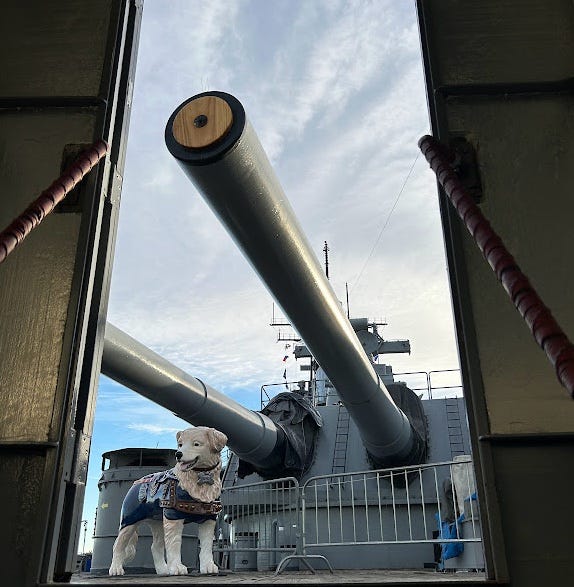#accounts
Closing and sharing new deals. Doing sales at Slack without salespeople. Meeting The Cannon.
What was the first deal I announced internally? I should probably remember or even make one up as the first one, but I don’t truthfully remember.
In the scope of things to come, I’m very confident it was very small. But at the time it will have felt big and important and like a significant sign of progress. Perhaps it was 30 users * $80 / year = $2,400. We were doing big company sales now, baby!
Though I’ve left the specifics of that first deal behind, I remember pretty clearly the format and reasoning behind posting the deal.
It was to celebrate the win because it was a team win.
It was to share the good news so others could celebrate the win too.
It was to teach the rest of the company about our customers and how we won.
So I created my second brand new Slack channel: #accounts.
Creating a new Slack channel
Creating a new channel in Slack was a privilege everyone technically had, but one that only rarely got exercised.
To create a new channel felt eventful. It meant you had something new to tell the company and that something new was not a one-off event. It promised to kick off a consistent stream of similar information, and it was important enough for multiple people to know about it for the foreseeable future. I had created one channel before #accounts — I had created #marketing.
So when I created #accounts I remember I had a sizeable and significant deal to announce. And I anticipated we’d have more deals to announce. I didn’t want to get cocky but I was working on deals and deals and deals. I had saucer eyes for deals.
But I didn’t just want this to be an announcement of deals, or self congratulations stream of ‘look at me’ pronouncements. I felt like one of the main responsibilities of being the person talking with customers was to help the whole company learn from our customers — their concerns, barriers to using Slack, context for making a decision to upgrade. As many of the key details as possible.
Posting about a new deal wasn’t just ringing a classic sales gong and saying, “Hail, me, the conquering hero, arriving home with plunder.” (though it was fun like that too). It was a chance to share the customer story of the deal with everyone and connect them to our customers’ experience. I wanted an announcement in #accounts to be a summary of:
Here is how our product is being used in the world
These are the people using our product
These are the reasons they have opted to upgrade and give us money
Posts in #accounts sought to be dispatches from my seat next to the money.
Here’s an example of an #accounts post that proved memorable for many reasons.
SxxxLabs upgraded to the Standard plan for 60 users at a first year annual investment of $5,400 (60 users * $80 / user - $1,200 credits = $3,600). SxxxLabs are a software company that sells automated Quality Assurance (QA) and testing software. They started using Slack 2 months ago in their development team and use spread to their product management, marketing, network / IT teams within a week. Their Director of People starting paying for Slack in their second week and she wanted to get away from the hassle of expensing the monthly costs. So the move to an annual plan and full organization commitment made sense. They did a bakeoff with HipChat vs Slack and we won. For rollout, they’re seeking support getting their sales and executive teams onboard, both of whom still rely on email since they mostly communicate outside the organization.
Now, SxxxLabs was not the first company to upgrade that I announced in #accounts. It was not the largest company and it was not the most well known company.
But they were early on — within the first few months after we launched Slack’s paid product. And they were about the size and deal terms mentioned above, which were really good terms for the time.
But what made SxxxLabs really notable for me was they were the first company to upgrade to Slack that I worked with in an adversarial, haggling fashion. They wanted to negotiate — hard.
Meeting The Cannon
The Director of People at SxxxLabs had set up a call with me to talk about their upgrade to a paid Slack plan. They wanted to bring on their leader of sales to the call too. Let’s call him The Cannon.
No problems, I thought. I had many of these calls under my belt by this time. I had talking points, data to share, ways to negotiate. I felt prepared. I was clearly not.
We got on the call and I remember it starting with shouting. Before I had covered pleasantries, or confirmed the agenda, or made sure we had everyone on the call, The Cannon started in. And the ending of the call? More shouting from The Cannon before I could sign off.
In between, The Cannon fired off insults. Our product was bullshit and expensive. Reload. It was criminal what we were charging. Reload. There was no way they were going to move ahead with an upgrade without at least an 80% discount. Final shot. They wanted a pricing proposal with at least that discount in their inbox within an hour or they would stop using Slack. Click.
In the moments when The Cannon reloaded I tried to move the conversation to the data I had prepared for them on how they were using Slack and how they could use it more effectively. But The Cannon shut that shit down. It didn’t matter how they used Slack because they weren’t going to use Slack because it was a fucking crime what we wanted to charge them. The team would use whatever product he decided they would use, and right now that was HipChat for $2 / user / month. That’s the only price they were going to upgrade at. Could we match it? Reload.
Thinking back, I have to confess — I had pretty thin skin. I was pretty green on sales calls. I had been treated very gently by our customers to that point. To get this hardball negotiation blast from The Cannon left me a bit shaken.
I don’t think I sounded rattled on the call, and I know I didn’t make any rash commitments or concessions. But I knew The Cannon had landed a direct hit on my soft expectations of how customers treated us.
I got off the call and knew I needed some fresh air and distance. I went for a walk. It probably rained and that was fine, fine Vancouver weather. The cool wet probably helped my burning cheeks. I got all my fuming and brooding and fuck yous out in the temperate weather, then went back to my desk and back to work, thinking, where is the aikido move here to use their energy against them?
I knew they had around 71 employees and wanted to get them all on a single software app for communication. I knew 30 of those employees used Slack and had been using Slack intensively each working day for many consecutive weeks. I knew they had hooked in additional systems to Slack so it worked almost as a heads-up display for them, consolidating messages from their tools in the place they worked with their teammates. Lastly, I knew that once technical teams got invested and comfortable using Slack like this, they were very hard to move.
These technical teams were highly skilled, expensive, influential and high status people inside technical organizations. 30 of 71 employees meant we had 42% of their employees, but they were the employees that mattered most when it came to software selection. Broadly put, in a distinction we started to see across organizations, they were not just tool users, they were the tool choosers. What they wanted mattered. They were scarce, hard to hire, hard to keep and essential to the success of the organization. In the classical Animal Farm frame, these were the people that were more equal than the others.
So I proceeded just as I would have if I had not taken any of the shots from The Cannon. Here’s how that looked.
(I’m including it in detail because it’s close to how we handled all our deals at the time, with many of the same positioning details and pricing arguments that Stewart and I had refined over time. I won’t offer any commentary. Ask questions in the comments if you want any. But first, I’ll let you see it for yourself.)
Hi XXXXX (The Cannon),
Thank you for your patience as I put the differences between Slack and HipChat and pricing proposal together.
Slack Differences
There are a few very important differences between Slack and HipChat that I’ve outlined below. As I mentioned earlier, many people have done the comparison and we’ve collected their tweets about Slack vs. HipChat.
Search — Slack is built around search from the ground up. We do deep search on messages, including conversational context, so every link, every document, every discussion and every decision, is all available for you. We believe there is a huge amount of value in team communication archives and almost all of it is locked up & inaccessible. Once you have good search over your entire history, it is something you will not be able to live without.
Files — Slack treats files as first-class citizens. Slack is not just a way to get files from one place to another, but a way to build an archive. Files can be commented on, starred for easily retrieval, and they can be filtered and sorted and searched in all kinds of ways. We have two native file types ('posts,' for short memos or internal blog post type documents, and 'snippets,' for blocks of raw text, code or log files). You can paste images in (very handy for sharing screenshots) and we can even integrate with external file systems like Google Docs and Dropbox. Again, the goal is to build a useful living archive of all team communication.
Integrations — Slack pulls together all your data and work into one place with simple and powerful integrations. Integrations make Slack into a home for all your connected tools and make all your cloud data universally searchable from one place. Integrations require nothing more than a few seconds of configuration and authorization to get setup.
Mobile – Slack works seamlessly between your computer and your mobile device with apps for both Android and iOS that allow you to remain connected and up to date effortlessly. Read a message on your mobile and it’s marked as read on the desktop. Slack keeps you in sync wherever you need to connect.
User Experience – In addition to these big differences, we hope your team will see how lots of little differences add up and make Slack a more thoughtful, simple and pleasant product to use for communication. It's a better experience and, for a product you use all day for communication, the experience matters.
Product Development – Slack delivers a higher pace of development. Simply put, we're investing a lot more in product development and improvements than anyone else, which results in a faster, more reliable, easier-to-use and more functional product. You can see the pace of our releases in the public Slack Changelog.
Slack Pricing Proposal
From our discussion I’ve put together an annual upgrade proposal below for the numbers of users you had listed: 75, 100 and 200.
For your reference, the way we work on pricing to help teams get started with Slack is by adding credits to their account. Today, in your Slack account you already have $250 of credits. So to start, the math for an annual upgrade to Slack’s Standard plan would look like this (for your 30 active users):
30 active users * $80 / user - $250 credits = $2150 (or $5.97 / user / month effectively)
Please note that throughout this pricing proposal when I mention users I’m referring to active users because Slack will only ever charge you for active users in your account:
When you upgrade to a paid tier, you’ll only be charged for accounts that are currently active. Any changes to the number of active users during your billing cycle will result in a pro-rated credit or charge, just as if the accounts were manually added or disabled by an administrator. The only difference: you don’t have to lift a finger.
So if you were to upgrade today you have 47 total users and 30 active users in your Slack account. You would only be charged for those 30 active users.
At 75 users – To upgrade your team at 75 users, we can add an additional $710 of credits to your Slack account, for a total of $960 credits. Then the math for an annual upgrade to Slack’s Standard plan would look like this:
75 users * $80 / user - $960 credits = $5,040 (or $5.75 / user / month effectively)
At 100 users – To upgrade your team at 100 users, we can add an additional $1,090 of credits to your Slack account, for a total of $1,340 credits. Then the math for an annual upgrade to Slack’s Standard plan would look like this:
100 users * $80 / user - $1,340 credits = $6,660 (or $5.55 / user / month effectively)
At 200 users – To upgrade your team at 200 users, we can add an additional $2,790 of credits to your Slack account, for a total of $3,040 credits. Then the math for an annual upgrade to Slack’s Standard plan would look like this:
200 users * $80 / user - $3,040 credits = $12,960 (or $5.40 / user / month effectively)
For annual upgrades we offer payment by credit card or payment by invoice. For payment by credit card, full payment is due at the time of upgrade. For payment by invoice, terms are NET15.
I’ve also included below some additional details on how we’ve priced Slack (On Slack Pricing), if you’re interested. If I can help with anything else, please let me know.
Best,
James
—
On Slack Pricing
We definitely understand price will be a factor in some team's decision about whether or not to use Slack. The bottom line is we don't think it is feasible for us to try to compete on price while meeting the standard of quality we aim for across all aspects of the service. And we believe our customers' communication tools deserve the highest standard of quality.
In short, we are not trying to be the cheapest: we are trying to be the best. If that means we have a smaller number of (happy) customers in the end, that's okay with us: we'd rather end up there than with a larger number of potentially frustrated customers.
Even though the annual total for a large-ish group of people (like Sxxxlabs) might appear high at first, for the intended audience of technology workers, Slack's per-person cost for the standard tier comes out to much less than one-one thousandth of the total cost of employment. At $0.18 / user per day, it takes a very tiny number of hours saved across the whole team to pay for Slack for a year.
Given how important communication is to all aspects of a team's operation — productivity, morale, capabilities — and especially given the value of search across all of an organization's data, no matter where it came from, we think the value is very, very good. The desk, chair and laptop that you buy for a new employee is about the same cost as 30 years of Slack.
Having said all that, we know there are cheaper alternatives out there. For some teams, those alternatives will be good enough. Those teams should take the cheaper option. That's ok with us — it's the way business works!
But, we'd hope someone like you who has already been using Slack for some time and has built up quite an archive (your team does about 450 messages / day) would see that value for themselves. If you don't, we're probably not surfacing it well enough for you yet. We'll work on that: there's a lot more coming!
Did they upgrade?
Yes they did. Within a day. Weren’t you paying attention above to the #accounts announcement?
They wrote back to ask for a new pricing tier at 60 users. I bumped them up to $1,200 in credits and they clicked the confirmation button. Done and dusted.
I never spoke with The Cannon again but the memory of my one conversation with him sticks with me even today. I was unprepared and embarrassed at my novice skills. I felt exposed and vulnerable in a conversation I didn’t expect.
In hindsight, I should probably thank The Cannon for disabusing me of my illusions so early on, and with such relatively low stakes. I should, and in my best moments I do feel grateful.
But I can also still feel the sting of the blast, and I never went into a customer conversation as naively unprepared again. I expected hardball. If that materialized, I was ready. Anything gentler was a pleasant surprise.
Up next:
Offsite in Sonoma
May 15, 2014 — My first time crossing the Golden Gate Bridge and seeing it up close was on a bus to a retreat in the town of Sonoma, two hours north of San Francisco. With me on the bus, seated sparsely among the ~50 seats, was the whole of Slack’s global workforce. That was our scale at the time, somewhere around 30 souls.






